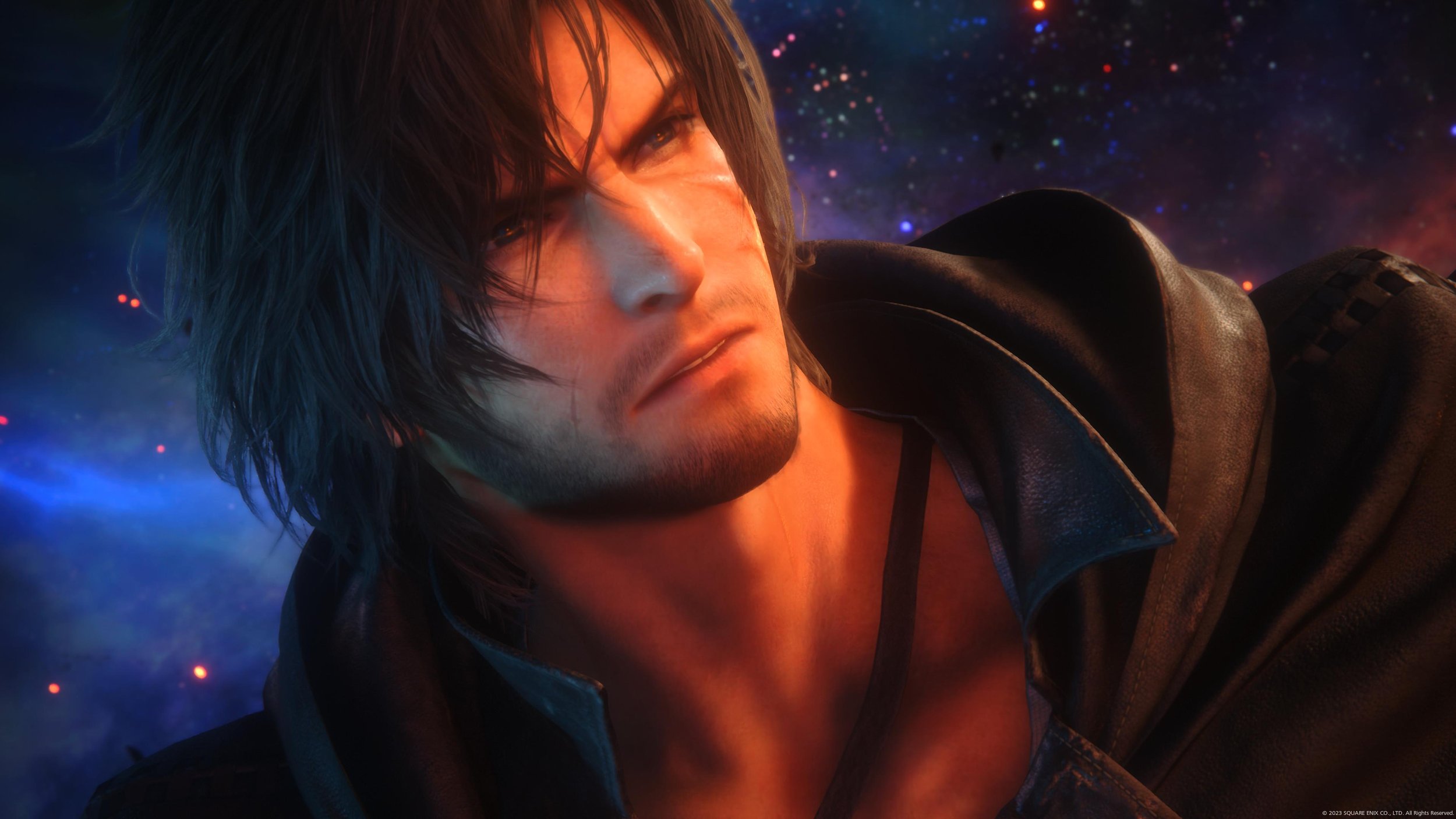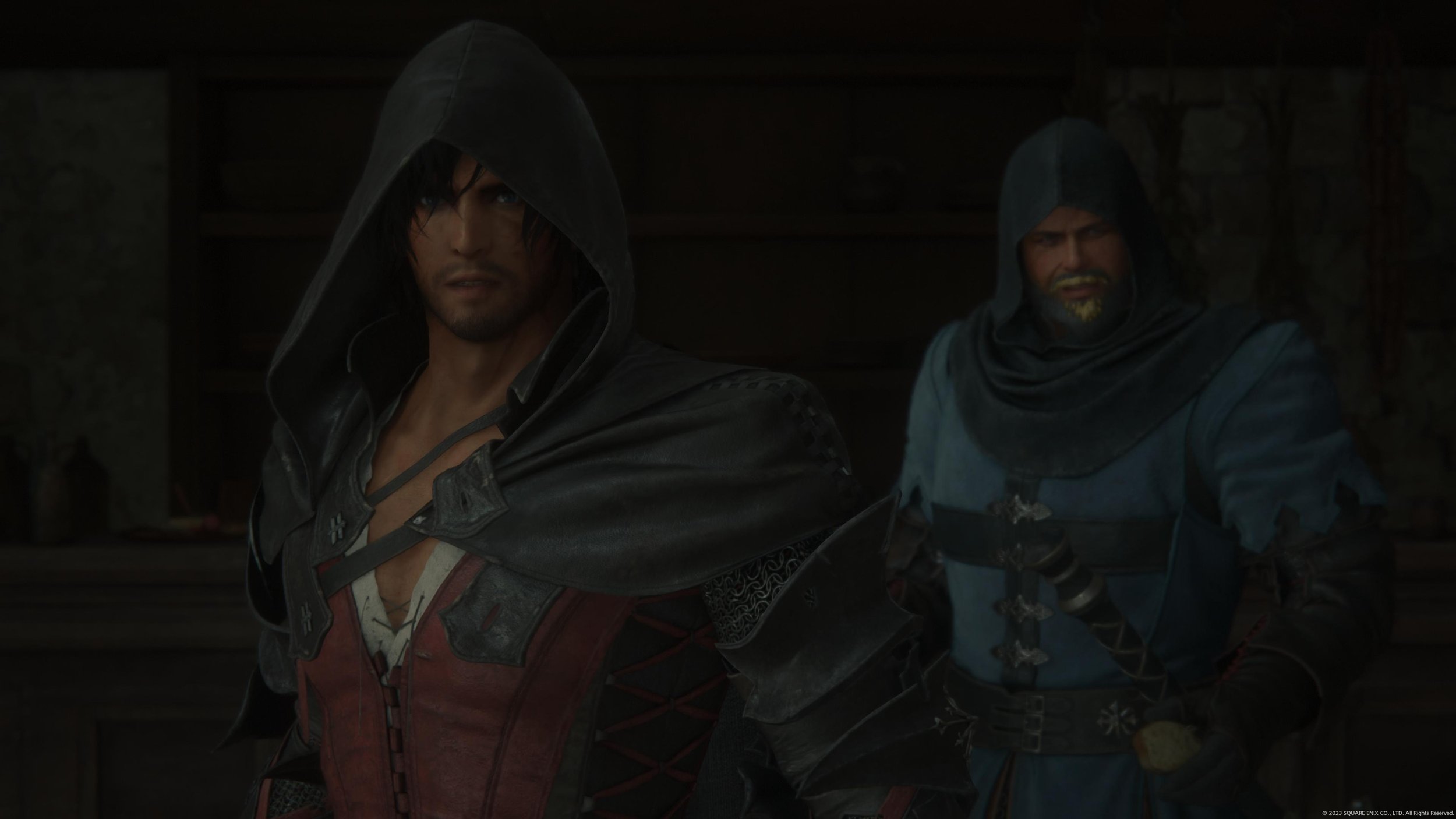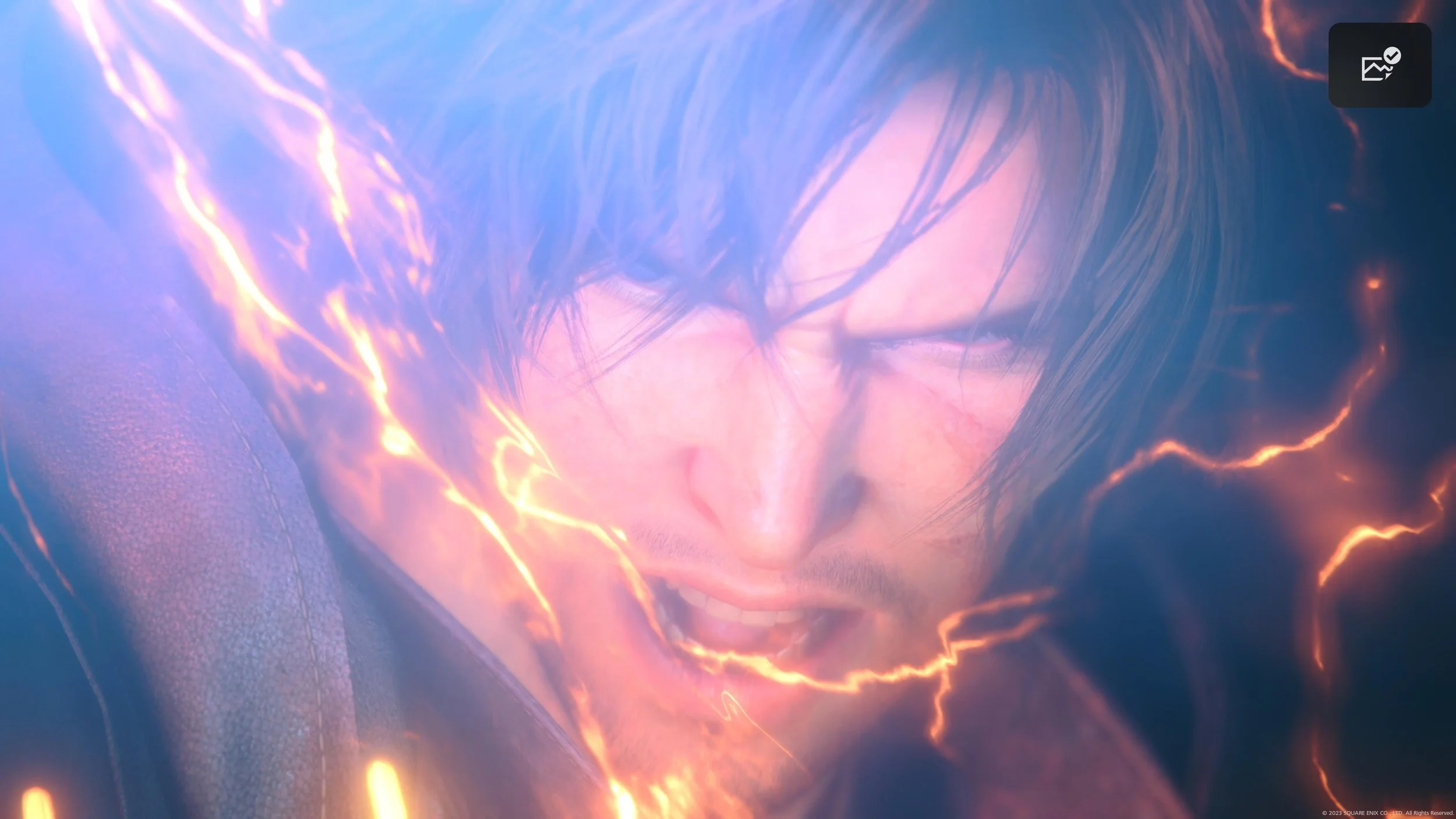A True Game Of Thrones
Final Fantasy is one of the longest-running video game franchises, spawning all the way back to its debut in Japan in 1987 with its North American release some years later. While my own personal experience with the franchise is its modern releases in Final Fantasy XV and the Final Fantasy VII Remake, Final Fantasy XVI connected with me in a different way in which XV and VII did not, resulting in it being my personal favorite of the series.
One of the main reasons for my adoration for what Final Fantasy XVI delivers is the clear inspiration of Game of Thrones. This is felt across its story and world, as well as the deeply complex characters you’ll encounter, and likely square off against. While I’ll dive into certain aspects of the story, I want to try to avoid spoiling anything to do with its key narrative, critical plot points, or important character moments as those often define the best this game offers.
You play as Clive Rosfield, a Prince of Rosaria, one of the Kingdoms of Valisthea. The story takes place over the course of several decades with you journeying alongside Clive at different stages in his life. Like Game of Thrones, the story manages to balance multiple storylines that weave in and out of themselves, allowing even the smallest moments to feel connected to the bigger narrative at play. While the story is my favorite part of this grand adventure, I do have a major criticism that did affect my overall score and experience with the title. This is in the form of some odd pacing following some major events, such as having to fetch items to build a ship after one of the most intense boss encounters of the game. This caused any momentum that the game was building to suddenly come to a screeching halt.
One of the strongest components as to why its story is so superbly handled is the cast of characters you meet along your journey, many of which are phenomenal in their characterization as well as their performances. I fell in love with several of them, from Cid, to Gav, and your hound, Torgal, to my personal favorite, Dion. You also have Jill, a character who is part of the larger story being told, often accompanying Clive in battle. Jill is a kind-hearted soul who shares in the same darkness that plagues Clive, forming a strong bond between the two.
Of course, I can’t speak about the characters without mentioning the near-impeccable performances of the actors that embody them. Ben Starr, who voices the English version of Clive, was incredibly impactful here, providing a character you simply want to root for. While previous Final Fantasy games saw the Japanese voice capture as its default, XVI recorded its British English first, making it a first for the series. Ben Starr’s performance as Clive at times reminded me somewhat of Henry Cavill’s take on Geralt in the Netflix Witcher series. Over the decades, Clive changes as a character, with Ben Starr’s performance also changing to suit, acting as both the younger and older versions of the character. Ben Starr’s range here is stunning, showcasing the character across a wide range of emotions and experiences. As Clive is the focus point for the entire game, he has a bit of everything, with Ben Starr delivering it all in the best way.
Another standout performance is that of Cid, performed by Ralph Ineson, who coincidently is in Game of Thrones as Dagmer Cleftjaw. Ineson, who was recently in Diablo IV, brings a very serious tone to his performance while also delivering his lines in often humorous ways, making me laugh out loud several times. With a solid cast of actors here, from Susannah Fielding (Jill) to Nina Yndis (Benedicta), to Alex Lanipekun (Kupka), it was rare to find a lacking performance across the entire game. And to my surprise, both Logan Hannan and Charlotte Mcburney of A Plague Tale: Requiem have appearances here too as the young versions of both Jill and Joshua, Clive’s younger sibling.
While I’ll remain vague on their involvement in the story, Benedicta Harmon and Hugo Kupka were fantastic antagonists to pit against the player. This is in part to each character having a darker side to them, especially as they constantly reach for power or look to rely heavily upon their own Eikon. While a lesser game could have simply presented them as they are, both villains have complex moments that show a great deal of their humanity, layered alongside their ferocious outward personalities.
A great deal of Final Fantasy XVI is told through absolutely gorgeous cutscenes, some of them being the best-looking I’ve seen across the industry. As with many Final Fantasy games, there are different levels to this presentation. You have a small use of pre-rendered assets, given that Yoshi-P stated he didn’t want to rely solely on them, which has been a crutch in the past for the series, which results in the bulk of the game’s cinematics either being entirely in-engine, through its in-game models, or a hybrid of pre-render and real-time. So, main story-wise the visual presentation is absolutely top tier, unfortunately, this means that any content away from this, such as the game’s side activities, sticks out like a sore thumb because of the significant downgrade in production value provided to these moments.
Audio has consistently been an important pillar of Final Fantasy, and that trend continues here throughout the entire journey. From sound effects in combat, which provide distinct sounds for each type of attack, to audio cues that help illustrate enemy attacks in combat. The standout; however, has to be the musical score, composed by Masayoshi Soken. He also composed Final Fantasy XIV, working alongside Naoki Yoshida. The music is outstanding as everything feels incredibly well-paced and perfectly timed. If the story had urgency in its events, the music reflected that, with slower-paced moments equally following suit. One piece, in particular, will stick with me, and that is the track, “Find the Flame”, which kicks in during the game’s biggest moments.
So, apart from its characters, story, and its presentation, I bet you are wondering about its gameplay. Well, that is where things are perhaps the most different from what you’d expect in a mainline Final Fantasy title. Taking a cue from other character-action titles, such as Devil May Cry and God of War (2018), which shouldn’t be too surprising considering Ryota Suzuki of Devil May Cry 5 worked here as the game’s Combat Director, Final Fantasy XVI is certainly a vast departure for the series, leaving behind its turn-based roots in favor of lighting-quick real-time encounters.
Players start off with some basic attacks and movement options, melee attacks using Square, and magic attacks on Triangle. You also have a dodge on R1 which if timed precisely creates the opportunity for a powerful counter-attack. Lastly, you have a dash of sorts on Circle which essentially teleports you towards the enemy using the power of the Eikon Pheonix. While that power varies and changes from Eikon to Eikon, that is one particular ability you’ll rely on in the game's early hours. While I’ll explain the use of Eikons more in a minute, they are basically this game's version of summons from past Final Fantasy games, albeit being made to have a more ingrained involvement in the game’s narrative and combat.
From the jump, the moment-to-moment gameplay feels a little bit limited, similar to a standard hack-and-slash game. As you progress throughout the story, you’ll level up, craft new gear, and gain additional powers that change up your combat offerings. Crafting new gear, or purchasing it, does help Clive in combat, but mostly feels like numbers increasing without any real benefits on gameplay. Most of the RPG aspects here are so light-touch that I often wondered if the game would be better without them or embracing those systems and fully exploring their use here, especially as other character-action games have seemingly gone with the latter in recent years.
Things get a bit more interesting as you gain ability points which allow you to upgrade and unlock new Eikon abilities as you earn them during key pivotal events. These range from a powerful block via the Titan, to Ifrit’s chaotic fire abilities and Ramuh’s devastating use of lighting. Eventually, Clive will be able to equip three different Eikons for use at once, swapping through them with the L2 button as you wait for cooldowns on their abilities to expire. And to be honest, once I found a series of attacks that worked for me, I rarely opted to choose some of the others I found several to just not hold up and be as multi-purpose as I would have liked. Each Eikon has a core ability, such as the Phoenix Dash, the Titan’s block, Garuda’s Deadly Embrace, to Ramuh’s Blind Justice, each of which feels unique to its Eikon and changes how you interact with enemies.
Each Eikon can also be equipped with two attack abilities that you activate by holding R2 and either Triangle or Square. These abilities can be exchanged with others that you have unlocked, or even relying on a different Eikon’s ability should you master them. This gives you six Eikon attacks to use at any time as they recharge. My personal favorite is Will o’ the Wykes which helps massively in stunning bigger enemies and bosses, those that feature a yellow bar under their health.
One of Final Fantasy XVI’s most involved combat systems are the Eikon battles themselves. These are massive encounters that are built upon the scale and spectacle of the Eikons, allowing for a change of pace from the standard combat you take part in as Clive. These battles are the culmination of key story moments and resemble the larger-than-life battles present in Asura’s Wrath, complete with QTEs that can result in either performing a significant chunk of damage or being on the receiving end of a brutal beat-down. In fact, if you absolutely love the combat in these moments, I strongly suggest checking out Asura’s Wrath as it is nearly identical in most cases.
In addition to the main story, there are a handful of side quests. As I mentioned earlier, the production of these quests is not on par with that of the main story, and unfortunately, neither is the design of these quests themselves. While you will often find one that is quite good, or at least somewhat compelling, many of these are the boring fetch quest variety; delivering plates of food that Clive will oddly shove into his pockets, to finding someone to fix a bridge. Many of these only give small amounts of Gil, XP, or items to use for crafting. That doesn’t mean that there aren’t some that are worth doing, and those are indicated by the green plus sign that adorns them. They often give you meaningful upgrades like the ability to carry more potions or unlock your trusty Chocobo for travel. It’s a shame that these quests suffer in their quality as the story presented across its world is vastly interesting and made me want to learn more about its people and its culture. This also translates into the emptiness found in its world, often providing no real reason to explore off the beaten path. It’s also worth pointing out that the world you explore is largely linear and follows more of the design of something akin to the old Monster Hunter games where each zone is a fairly isolated and linear series of environments. And traversing to other areas requires the use of an overworld map, which will restrict access to some locations depending on the quest or story progress.
While exploring doesn’t lead to anything fruitful, you can engage in special hunts that see you encounter very powerful enemies, offering rewards as you defeat them. While these often range in unique crafting components, it again ties back to those systems often having little to no impact other than seeing the numbers go up, especially as your only visible changes are your weapons and that of a single change in outfit midway through the game, although the latter is a story beat more so than any true customization.
When it comes to the game’s accessibility in regard to its difficulty and approachability, you have two options in Action-based and Story-based. Action-based focuses on challenging combat whereas Story-based is designed around enjoying the story more so than how difficult the battles are. The game does offer some items that will carry out certain actions for you such as an auto-dodge or auto-heal. One item, in particular, allows Torgal to fight on his own, instead of having you give him commands via the D-pad. These items do require the use of an accessory slot, instead of being a setting you can switch on or off, which can often feel like you are at a disadvantage for using what should be an accessibility feature.
For those who find the base game to lack a certain degree of challenge, new game plus options are there, giving you the ability to play the game on a harder difficult setting, time attack modes, as well as additional challenges to take on. The traditional new game plus mode is called Final Fantasy mode, resulting in more difficult enemies, but Clive is also stronger as a result. Clive will retain all his items and unlocked abilities from your previous save, starting the game with Clive at level 50.
Final Fantasy XVI has engaging moment-to-moment gameplay supported by a story and cast of characters that I’ll never forget. Had my score been based purely on those elements, I would consider it to be a near-perfect game. Unfortunately, the systems and content supporting the main narrative can feel lacking and almost completely unnecessary, ultimately taking away from an otherwise incredible experience. While Final Fantasy XVI is a vast departure for the series, its core elements are undeniably familiar. Its combat may certainly divide the series’ faithful, given its change from the expected, but this adventure is still nonetheless one that embraces the true spirit of its lineage.
Developer - Creative Business Unit III. Publisher - Square Enix. Released - June 22nd, 2023. Available On - PlayStation 5. Rated - (M) Blood and Gore, Partial Nudity, Sexual Themes, Strong Language, Violence. Platform Reviewed - PlayStation 5. Review Access - Final Fantasy XVI was purchased for review.


















I’m Jordan I have a background in game design and am deeply passionate about accessibility in gaming. My favourite games/franchises include Shenmue, Red Dead Redemption 2, Plague Tale: Requiem, Metal Gear Solid 3, Yakuza, Splinter Cell, and Assassin’s Creed.